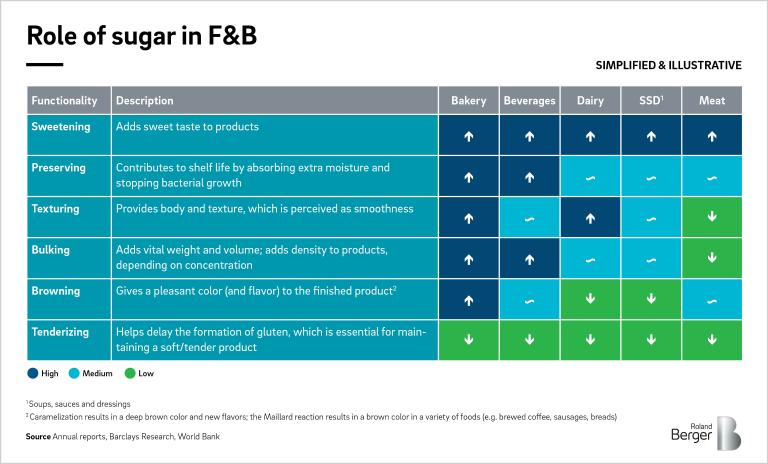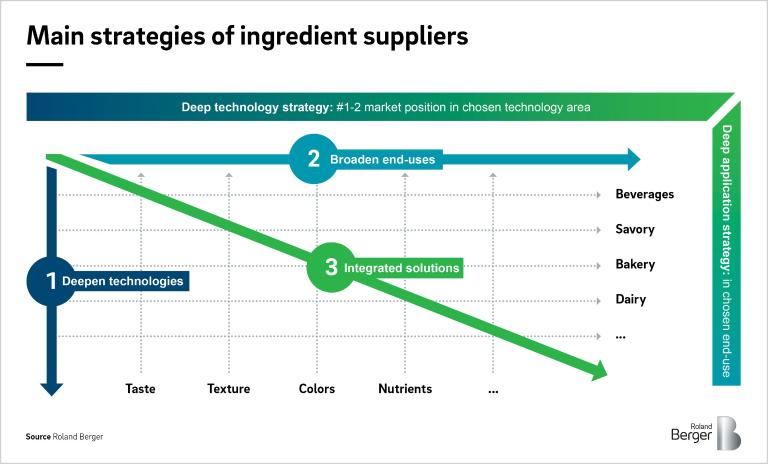Key consumer trends in F&B
Clean label. A key trend which has a high impact on new product development is the shift towards 'natural' and 'free-from'. Consumers are increasingly focused on clean-label products with fewer ingredients on the labels.
Ethical and environmental. Consumers are becoming increasingly aware of the environmental impact of the food chain, and are therefore making conscious choices.
Tastier, healthier food. An increased consumer focus on health has been a major trend for the past several years and has further accelerated during the COVID-19 pandemic.
Plant-based. Another key trend in the industry is the shift towards plant-based meat and dairy alternatives. Increasing numbers of people are adopting veganism and flexitarian diets.
New challenges in F&B product formulation leading to more complex value chains
Natural/clean label. The increased focus on clean label and replacement of synthetically-derived ingredients is expected to continue to drive product complexity as similar functionalities will need to be achieved with fewer and new/natural ingredients
Plant-based. Formulating plant-based proteins into alternative food products comes with challenges related to taste and clean label. Pea protein, for example, is a high-growth ingredient with high consumer acceptance. However, formulating this ingredient into a product comes with challenges related to taste, texture and mouthfeel. Solving for taste, texture and mouthfeel by adding texturants, emulsifiers and flavors, though, at odds with the increased consumer focus on clean labels.
Health. Adding functional ingredients to a food product often comes with challenges related to product taste, stability and shelf life. The market for bacteria probiotics for food applications, for example, is growing fast due to a growing amount of claims around gut health, immune system health and mental health. The integration of living bacteria into F&B product matrixes, however, requires application expertise to ensure stability and deliver an end-product that tastes good and provides viable probiotics to the consumer.
The sugar reduction challenge
Sugar plays a key role in multiple F&B applications, and has an impact on multiple functionalities beyond sweetening. When, for example, sugar is removed from a beverage and replaced with a sweetener such as stevia, the mouthfeel needs to be corrected (taking out sugar will create an 'emptiness'), as will sweetener intensity and bitterness.
![{[downloads[language].preview]}](https://www.rolandberger.com/publications/publication_image/Roland-Berger_FB-Application_cover_download_preview.jpg)




_person_144.png)







